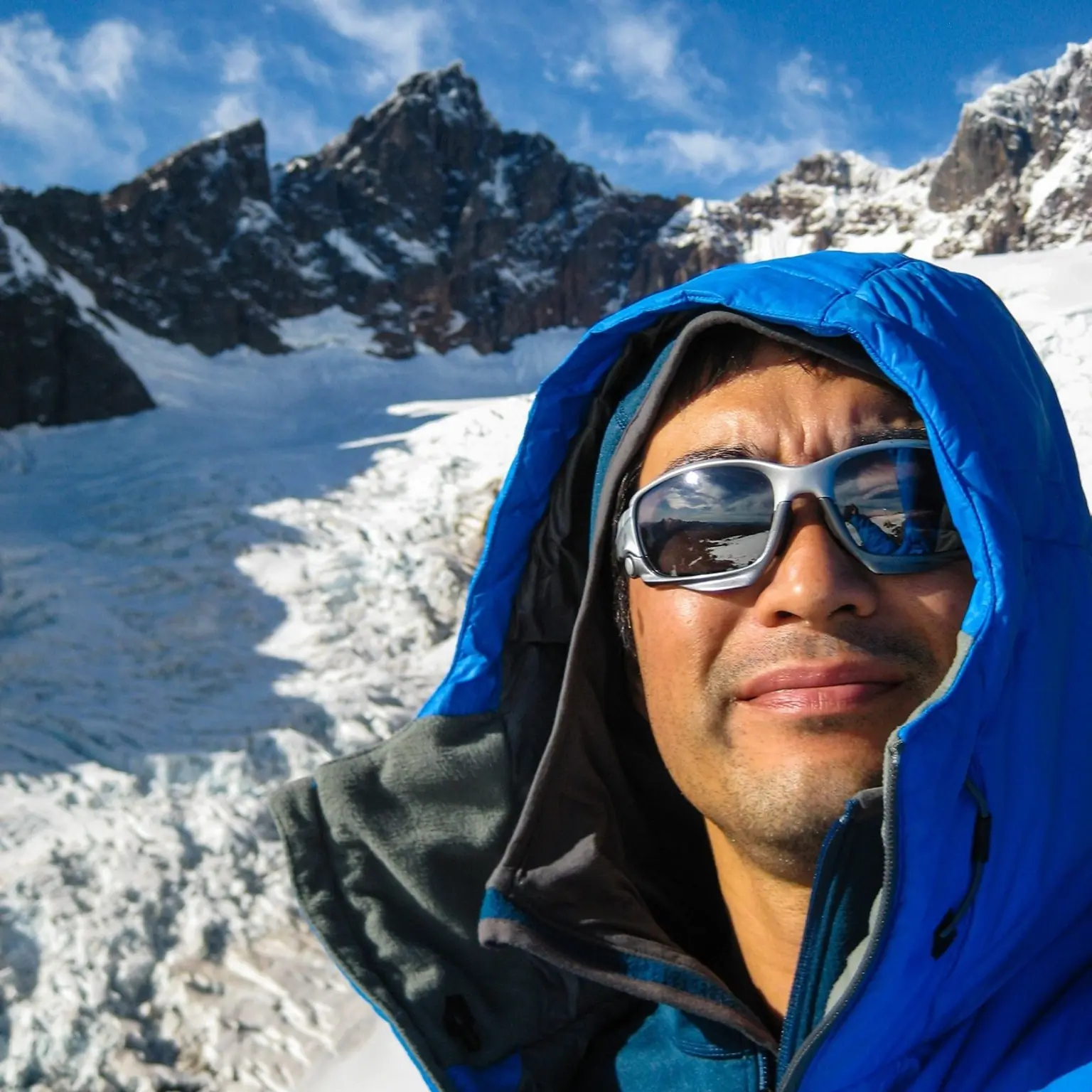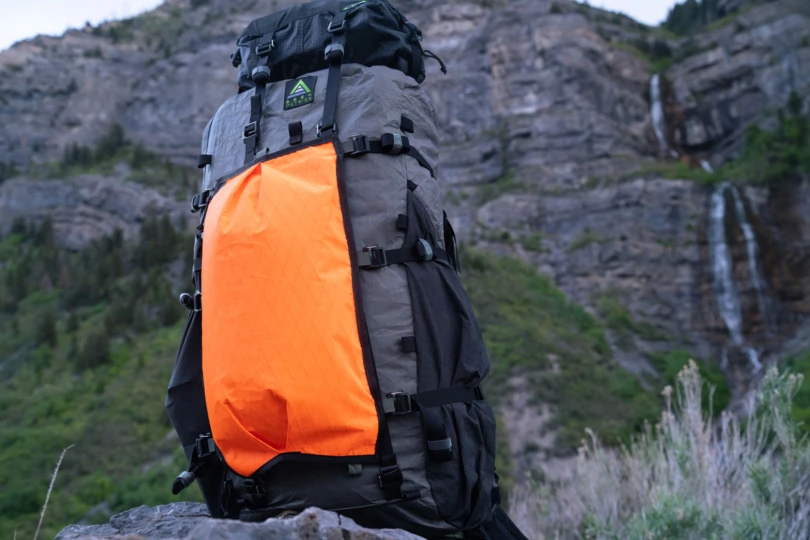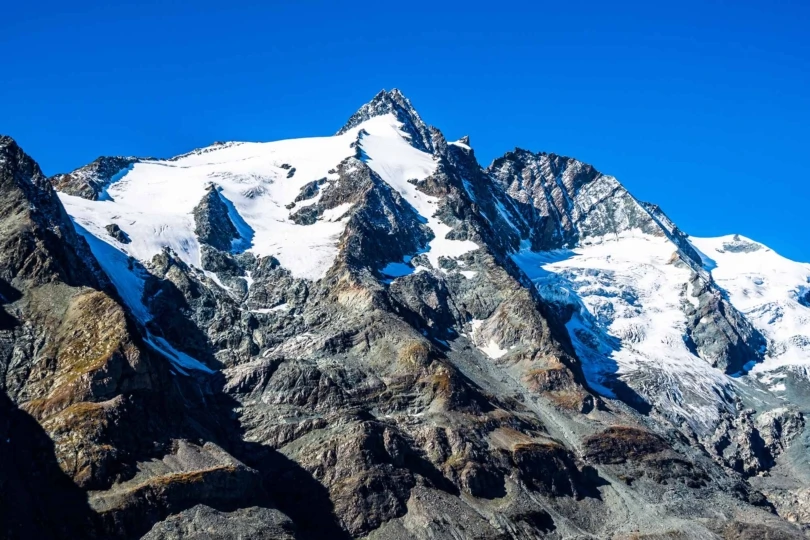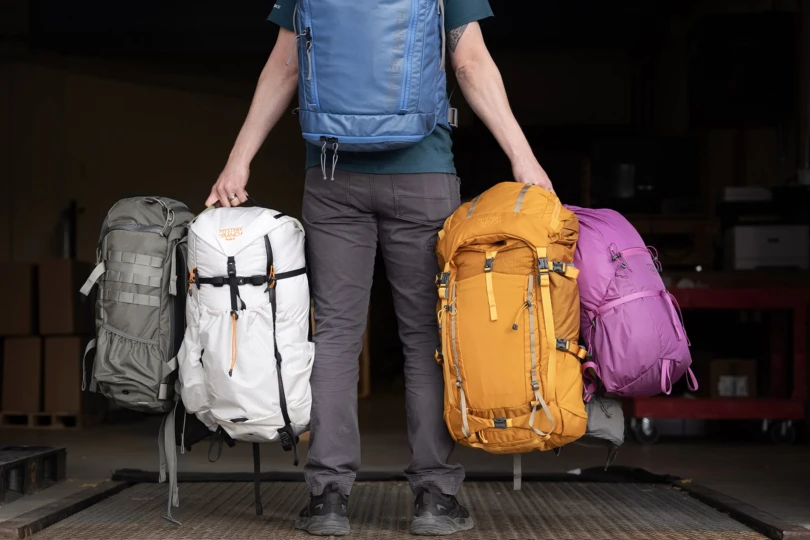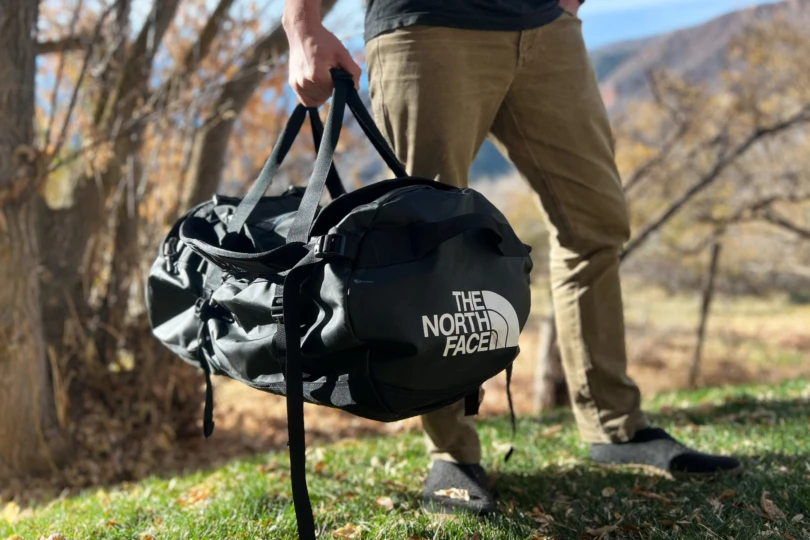After serious review, the Patagonia Ascensionist is a favorite climbing pack for alpine, ice, and multipitch climbing. Our review, conducted in Alaska, highlights how to best use the pack and who should buy it.
Patagonia employed climbing luminaries like Steve House and Kelly Cordes to develop a purpose-driven backpack for hardcore alpine climbing. We tested the $179 Ascensionist Pack 40L, redesigned in 2017, during a multipitch ice climbing and skiing trip near Valdez, Alaska, this past February.
The Patagonia Ascensionist Pack 40L triangulates minimalism, durability, and usefulness. The pack is light (1 pound 15 ounces verified weight for L/XL) but has useful features for several forms of climbing and wilderness travel while remaining exceptionally durable.
The Ascensionist Pack 40L hits the sweet spot, particularly for quick movement in the mountains. It’s light, durable, and versatile for the light-and-fast mountain adventurer.
Patagonia Ascensionist Review: Materials
Patagonia used a 5.5-ounce, 210-denier Cordura nylon with polyester ripstop as the main fabric. The polyurethane coating feels thick and yields a stiff feeling in the pack body.
On the bottom, the pack has panels lined with foam, which create a base of support for the pack and increased abrasion protection from internal gear. The top closure flap also contains foam at the lip, providing an easy-to-grab “handle” when wearing gloves.
The back panel contains a 3/16-inch-thick removable foam insert, one of the firmest and most rigid ever encountered. The shoulder straps and hips also use thin and rigid foam. And the hip belt pads are precurved and can be moved along the hip belt webbing or removed.
Careful inspection reveals construction meant for rough treatment. All stitches are tight and straight, and bar tacks are dense and well placed. There’s no excessive binding tape or loose threads over the majority of the pack (the only area with excess seam allowance was at the top behind the foam back panel).
The external daisy chains and haul loop, which can encounter high-tensile loads, are thoughtfully sewn into seams and bar tacked through multiple layers of fabric and binding tape. The webbing composing the haul loop can be traced through a side seam on each side of the pack, extending halfway down the pack — a fail-safe measure for a highly stressed feature.
The Ascensionist Pack 40L in Alaska: Test
I chose the Ascensionist 40L for a 10-day trip to Alaska, where I accessed multipitch waterfall ice climbs via skis.
I first noticed how readily I could load the pack. The foam-lined bottom, rigid foam back panel, stiff fabric, and short spindrift collar kept the rucksack upright. I funneled items inside quickly and without frustration.
Winter Layer Compatibility
Closing the collar and “lid” (which is just an extension of the collar) is a slick affair; an autolocking cam locks a drawstring tight. Opening the pack is also efficient, requiring only a tug on a cord that frees the locking cam. Accessing the interior of the pack and closing it at hanging belays, with gloves on, presented no problems.
Similar to other frameless climbing rucksacks, packing had to be deliberate. Keeping rigid items closer to the back panel and compressing contents had a considerable effect on how comfortable and secure the pack felt — even more so when the pack wasn’t at capacity. Haphazard packing could cause the Ascensionist to fold forward, creating an awkward carry.
The foam back panel did an admirable job of preventing hot spots caused by climbing hardware, making the pack a viable and lightweight option for rock climbing. The loads encountered during the ice climbing trip were in the 25-pound range, and the Ascensionist Pack 40L presented no issues, remaining comfortable and efficient.
The firm padding in both the shoulder straps and hip belt also worked well with winter clothing. And I appreciated the rigidity when threading thickly clothed arms in and out of the shoulder straps. The moveable hip belts allowed customization around body, harness, and clothing profiles, and the gear loops were always in play.
Climbing Gear and the Ascensionist 40L
Ditching the foam back panel and hip belt pads yielded a lighter and more mobile pack. But I found this only usable if the climbing load was limited to mostly soft items, with harder items padded with clothing. I could remain comfortable and efficient climbing with extra layers, rope, some climbing hardware, soft water bottles, and food in this minimalist mode.
You can also maneuver the removable lid closure strap to fasten an up-to-80-meter rope on top of the pack. The nonfloating top cover and short spindrift collar (4-5 inches) limited internal overstuffing. The ice axe T-bars and shaft straps worked as designed, and the side compression straps have enough slack to secure bulky items like sleeping pads. I hauled skis using these compression straps, but, for the A-frame carry to feel secure, the pack had to be loaded correctly to form a rigid base.
Climbing, Skiing Test: Patagonia Ascensionist
It was a joy to climb and approach ski with the Patagonia Ascensionist. I usually trend towards packs with more structure, always hoping that sacrificing suspension to save weight was worth the improved comfort and efficiency.
The Ascensionist skied and climbed superbly with correct packing, opening my eyes to what’s possible with the least amount of materials. This pack is not a “minimalist” or “ultralight” model, but it’s lighter than all my packs that have any suspension or trusted durability.
While on the go, this pack felt unhindered in comparison to other models with suspension I’ve used. Twisting during long reaches didn’t require overcoming suspension component resistance. And the tapered shape allowed rear elbow swinging room for shaking arms out while on route and aggressive poling on approach.
No part of the pack suffered any visible damage other than soiling despite rough treatment in rugged environments. The pack endured no ski edge or ice tool damage, no fabric or webbing fraying. All foam held shape and density, and all buckles, locks, straps, and drawstrings worked perfectly for the duration of the testing period.
Who It’s For: Patagonia Ascensionist Review
The Patagonia Ascensionist Pack 40L might not be the lightest choice, have the most features, or provide the most effective weight transfer. But it hits the sweet spot for fast-and-light forays into the mountains.
It won’t tear or break in hostile conditions. The feature list, although sparse, provided this tester with just the right amount of function. The $179 Patagonia Ascensionist Pack 40L demands serious consideration when mobility, speed, and robustness are requirements for the planned objectives.






